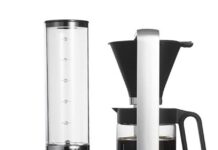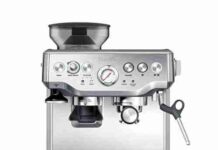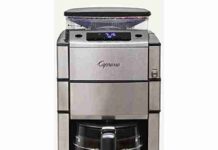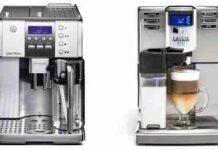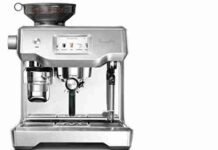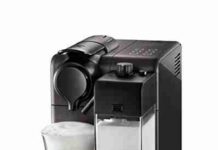Coffee lovers often debate about the ideal temperature for brewing their favorite beverage. Achieving the perfect balance of flavors, aroma, and strength can be a delicate process, but the temperature plays a crucial role. In this article, we explore the science behind brewing coffee and uncover the sweet spot for the best temperature to unlock the true essence of your morning cup of joe. So, grab your favorite mug and join us on this caffeinated journey to discover the best temperature for brewing coffee.
Factors Affecting Coffee Brewing Temperature
When it comes to brewing coffee, the temperature plays a crucial role in determining the final taste and quality of the brew. Several factors impact the brewing temperature, including coffee extraction, coffee flavor, brewing method, and roast level. By understanding these factors, coffee enthusiasts can achieve the perfect cup of coffee tailored to their individual preferences.
Coffee Extraction
The extraction process refers to the process of dissolving coffee compounds, such as oils, sugars, and acids, from the coffee grounds into the water. Temperature plays a significant role in determining the rate of extraction. Higher temperatures tend to speed up the extraction process, while lower temperatures slow it down. Achieving a balanced extraction is important to ensure a well-rounded and flavorful cup of coffee.
Coffee Flavor
The temperature at which coffee is brewed influences its flavor profile. Different flavors and aromas are extracted at various temperatures, leading to variations in taste. The ideal brewing temperature allows for the release of both acidic and sweet flavors, resulting in a complex and balanced cup of coffee.
Brewing Method
Each brewing method, whether it’s a French press, pour-over, or espresso machine, requires a specific temperature range to bring out the best flavors in the coffee. The ideal brewing temperature for each method is determined by the length of extraction time, the amount of water used, and the type of filters or brewing equipment employed.
Roast Level
The roast level of the coffee beans also affects the brewing temperature. Different roast levels, such as light, medium, or dark, have unique chemical compositions, which means they require different temperatures to achieve optimal extraction. Understanding the correlation between roast level and brewing temperature is crucial to produce the desired coffee flavor.
Ideal Brewing Temperatures
The ideal brewing temperature range for most coffees falls between 195°F to 205°F (90°C to 96°C). Within this range, coffee compounds are extracted effectively, resulting in a flavorful and well-balanced brew. However, specific coffee blends or single-origin beans may require adjustments to the temperature range to bring out their unique characteristics fully.
Different Approaches for Specific Coffee
While the ideal brewing temperature range remains consistent, different approaches can be taken to achieve the desired taste for specific types of coffee. For instance, brewing cold brew coffee requires a longer steeping time at lower temperatures, resulting in a smoother and less acidic brew. On the other hand, brewing espresso calls for a higher temperature for a shorter extraction time, resulting in a concentrated and robust flavor.
Effects of Brewing at Incorrect Temperatures
Brewing coffee at incorrect temperatures can have a significant impact on the final taste and quality of the brew. Incorrect temperature can lead to under-extraction or over-extraction, resulting in a bitter or sour taste. Additionally, brewing at too low of a temperature can result in a weak or watery flavor, while brewing at too high of a temperature can result in burnt or unpleasant flavors.
Under-Extraction
Under-extraction occurs when the brewing temperature is too low, and the coffee compounds are not fully dissolved into the water. This can result in a weak brew with a lack of flavor and aroma. The coffee may taste sour or acidic, as the desirable flavors haven’t been properly extracted.
Over-Extraction
Conversely, over-extraction happens when the brewing temperature is too high, and the coffee compounds are extracted too quickly and excessively. This can result in a bitter and unpleasant taste. Over-extracted coffee may also have a burnt or smoky flavor due to the breakdown of coffee compounds at high temperatures.
Bitter or Sour Taste
Brewing coffee at incorrect temperatures can also lead to a bitter or sour taste. When brewing at too high of a temperature, the coffee can become overly bitter, as undesirable compounds are extracted. Similarly, brewing at too low of a temperature can result in a sour taste, as acidic compounds are not properly balanced with the sweetness of the coffee.
Weak or Watery Flavor
Brewing at a temperature lower than the recommended range can result in a weak or watery flavor. Inadequate extraction at low temperatures fails to bring out the full spectrum of flavors, leading to a lackluster and diluted brew. To achieve a rich and flavorful cup of coffee, it is essential to brew within the optimal temperature range.
Coffee Roast Level and Brewing Temperature
The roast level of coffee beans plays a vital role in determining the ideal brewing temperature. Light roast, medium roast, and dark roast beans have different chemical compositions, requiring specific temperatures to extract the desired flavors. Understanding the relationship between roast level and brewing temperature is key to achieving the perfect brew.
Light Roast
Light roast beans are typically more acidic and have delicate flavors. Brewing light roast coffee at a lower temperature, closer to the lower end of the ideal range, enhances the acidity and brings out the subtle and bright flavors of the beans. Brewing at too high of a temperature can lead to a loss of these delicate flavors, resulting in a less nuanced and balanced cup of coffee.
Medium Roast
Medium roast beans strike a balance between acidity and sweetness. Brewing at the recommended temperature range allows for a well-rounded extraction, bringing out the robust flavors while maintaining the desired acidity. Deviating too far from the ideal temperature range may result in an underwhelming cup with muted flavors.
Dark Roast
Dark roast beans, known for their rich and bold flavors, require higher temperatures during brewing. The higher heat helps extract the essential oils and flavors locked within the beans, resulting in a stronger and more pronounced cup of coffee. However, it is important to avoid overheating, as this can lead to a bitter brew.
Brewing Coffee with Precision Temperature Control
Achieving precise control over brewing temperature is essential for coffee enthusiasts who want to explore the full spectrum of flavors in their brew. There are several methods and tools available that allow for accurate temperature adjustment during the brewing process.
Scales with Built-In Temperature Control
Some brewing scales come equipped with built-in temperature control features. These scales allow users to monitor and adjust the water temperature during brewing accurately. By maintaining the desired temperature range throughout the brewing process, coffee enthusiasts can achieve consistent and flavorful results.
Electric Kettles with Variable Temperature Settings
Electric kettles with variable temperature settings are another popular tool for achieving precise brewing temperatures. These kettles allow users to select the desired temperature range, heating the water to the exact degree required for optimal extraction. This level of control ensures that the desired flavors and aromas are fully extracted from the coffee grounds.
Digital Thermometers
A simple yet effective tool for monitoring brewing temperature is a digital thermometer. By regularly checking the water temperature during the brewing process, coffee enthusiasts can fine-tune their brewing techniques. This allows for adjustments to be made if the temperature deviates from the ideal range, ensuring the best possible flavor in each cup of coffee.
Alternative Brewing Methods
Apart from traditional brewing methods like drip coffee, there are alternative methods that require different temperature ranges to achieve unique flavors and profiles. These methods offer coffee enthusiasts the opportunity to experiment and discover new taste experiences.
Cold Brew
Cold brew coffee has gained popularity due to its smooth, low-acidity profile. Brewing cold brew requires steeping coffee grounds in cold water for an extended period, usually overnight. The low temperature allows for a slow extraction process, resulting in a less acidic and milder flavor profile.
French Press
The French press brewing method requires a higher temperature compared to other methods. Hot water is poured over coffee grounds and left to steep for a few minutes before pressing the plunger down to separate the grounds from the brewed coffee. The higher temperature improves extraction and produces a robust and full-bodied cup of coffee.
Pour-Over
Pour-over brewing involves slowly pouring hot water over coffee grounds, allowing it to drip through a filter. The ideal brewing temperature for pour-over methods typically falls within the recommended range. This method provides precise control over extraction and results in a clean, bright, and well-balanced cup of coffee.
Espresso
Espresso brewing demands high temperatures and pressures to achieve the concentrated and intense flavors it is known for. The water is forced through finely ground coffee under high pressure for a short period, resulting in a concentrated shot of rich espresso. The temperature and pressure must be carefully controlled to extract the best flavors without burning the coffee.
Adjusting Brew Temperature Based on Coffee Beans
Different types of coffee beans have distinct flavor profiles, and adjusting the brewing temperature can help highlight their unique characteristics.
Arabica Beans
Arabica beans, known for their nuanced flavor profiles, often benefit from brewing at slightly lower temperatures. A lower temperature allows for the extraction of the delicate flavors while avoiding the risk of over-extraction, which can result in a bitter or burnt taste.
Robusta Beans
Robusta beans, on the other hand, have a more robust and bitter flavor compared to Arabica beans. Brewing at slightly higher temperatures can help balance the flavors and minimize any potential sourness. Adjusting the temperature to suit the specific beans being used can result in a more enjoyable and well-rounded cup of coffee.
Single-Origin Beans
Single-origin beans, which come from a specific geographic location, often have unique flavor profiles. To fully appreciate and highlight the distinct characteristics of single-origin beans, it is crucial to experiment with various brewing temperatures. By adjusting the temperature, coffee enthusiasts can unlock the nuanced flavors specific to each origin.
Importance of Preheating Brewing Equipment
Preheating brewing equipment is often overlooked but is an essential step in achieving consistent and optimal brewing temperatures.
Preheating Coffee Maker
Preheating the coffee maker, whether it’s a drip coffee machine or a French press, ensures that the brewing temperature remains stable throughout the process. By rinsing the equipment with hot water beforehand, the brewing environment is already warm, allowing for quicker and more accurate temperature adjustments during brewing.
Preheating Brewing Vessel
When using pour-over or French press methods, preheating the brewing vessel, such as a carafe or a coffee mug, helps maintain the desired brewing temperature. By pouring hot water into the vessel and letting it sit for a few minutes before brewing, the vessel retains the heat and prevents the brewed coffee from cooling too quickly.
Exploring Personal Preferences
Coffee brewing temperature is subjective, and each individual may prefer different flavors and profiles. By experimenting with various brewing temperatures, coffee enthusiasts can discover their personal preferences and tailor their brewing methods to achieve the desired taste.
Experimenting with Temperatures
Try brewing the same coffee beans at different temperature ranges to observe the changes in flavor. Start with the recommended temperature range and gradually adjust higher or lower to capture the subtle variations in taste. Take notes on the different flavors and aromas experienced at each temperature to better understand personal preferences.
Tasting and Comparing Different Brewing Temperatures
To fully appreciate the impact of brewing temperature, taste and compare different brews side by side. Prepare multiple cups of coffee using the same beans but brewed at different temperatures. This tasting experiment allows for a direct comparison of the flavors and helps identify the ideal brewing temperature based on individual preferences.
Factors to Consider when Choosing Brewing Temperature
When selecting the brewing temperature, several factors should be considered to achieve the desired coffee experience.
Coffee Strength
Some individuals prefer a stronger coffee, while others prefer a milder brew. The brewing temperature influences the extraction process, which, in turn, affects the overall strength of the coffee. Higher temperatures tend to extract more coffee compounds, resulting in a stronger brew, while lower temperatures lead to a milder cup.
Flavor Balance
Finding the perfect balance of flavors is crucial to creating an enjoyable cup of coffee. Brewing at the right temperature allows for the extraction of the desired flavors while minimizing any undesirable characteristics. Adjusting the brewing temperature can help achieve a balanced and well-rounded flavor profile.
Bean Origin and Roast Level
Different coffee beans have unique flavor profiles that can be accentuated or diminished depending on the brewing temperature. Consider the origin and roast level of the beans when selecting the ideal temperature. Experimentation is key to discovering the perfect temperature that brings out the best in each batch of coffee beans.
Brewing Equipment
The choice of brewing equipment also plays a role in temperature selection. Different brewing methods have specific temperature requirements to achieve optimal results. Consider the capabilities and limitations of the equipment being used and adjust the brewing temperature accordingly.
In conclusion, brewing coffee at the ideal temperature is a crucial element in achieving a flavorful and satisfying cup. Factors such as coffee extraction, coffee flavor, brewing method, and roast level all contribute to the optimal brewing temperature. By understanding and experimenting with different temperatures, coffee enthusiasts can tailor their brewing techniques to achieve their desired taste preferences. Whether enjoying a light roast pour-over or a bold espresso shot, precise temperature control and knowledge of the factors affecting flavor will lead to a delightful coffee experience.



